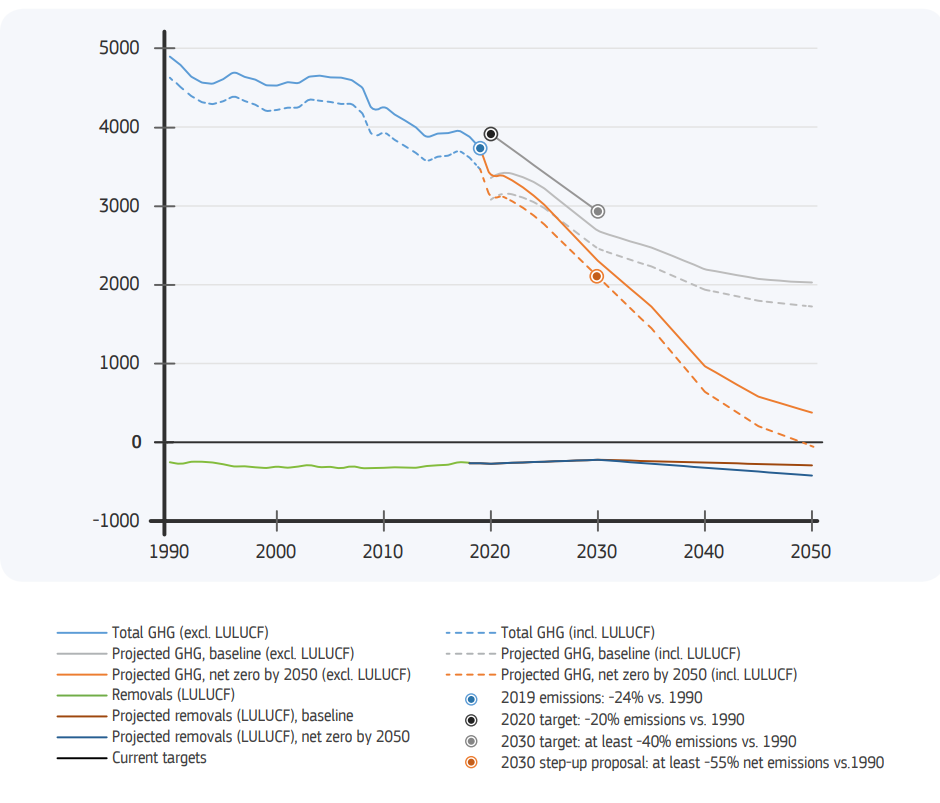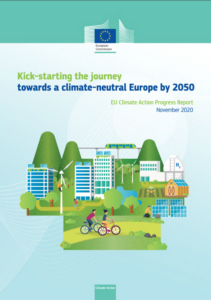The European Commission launched its annual EU Climate Action Progress Report, covering the EU’s progress in cutting greenhouse gas emissions in 2019. Greenhouse gas emissions in the EU-27 decreased by 3.7 % year-on-year, while GDP grew by 1.5%.
In general, the global shipping carries 80% of the world’s trade volume and is responsible for 2-3% of all GHG emissions. In the future, these emissions are projected to increase significantly if mitigation measures are not swiftly put in place.
After the adoption of the initial GHG emissions reduction strategy by the International Maritime Organization (IMO) in 2018, the European Commission has been closely involved in the ongoing negotiations around its implementation. So far, discussions have focused in particular on short-term measures that can deliver further emissions reductions before 2023, also building on existing IMO measures, such as the Energy Efficiency Design Index and the Ship Energy Efficiency Management Plan.
2019
The COVID-19 crisis is expected to lead to an unprecedented fall in emissions in 2020. The IEA estimates a drop of 8% in 2020 for global CO2 emissions.
Even before the pandemic, emissions from stationary installations in all countries covered by the EU emissions trading system (EU ETS), fell strongly by 9.1% from 2018 to 2019. Emissions not covered by the ETS (such as emissions from non-ETS industry, transport, buildings, agriculture and waste) remained unchanged from 2018 to 2019. The year before these had seen a slight drop, however, overall, emissions from this aggregate of economic sectors have been stable for several years. According to preliminary accounting under the Kyoto Protocol, decreasing net credits from land use, land use change and forestry (LULUCF) between 2013 and 2017 stabilized in 2018.
In 2019, EU greenhouse gas emissions (including international aviation) were down by 24% from 1990 levels, according to the approximated GHG inventory. Including emissions and removals from land use, land use change and forestry this results in a net emission reduction of 25%.
It is highlighted that emissions in 2019 fell by 3.7% compared to 2018.
The EU remains well on track to achieve its target under the UN Framework Convention on Climate Change of reducing GHG emissions by 20% by 2020. EU GHG emissions therefore reached their lowest level since 1990.
Between 1990 and 2019, the EU’s combined GDP grew by about 60%. The GHG emission intensity of the economy, defined as the ratio between emissions and GDPv fell to 282 g CO2 eq/€2015, which is less than half of the 1990 level.

Aiming towards a new goal, in 2019 the European Council agreed in December on the EU becoming climate-neutral by 2050 in line with the Paris Agreement. The European Parliament had already endorsed the objective in its resolution on climate change of March.
Therefore, to ensure climate neutrality by 2050, the Commission presented the European Green Deal as a comprehensive multi-sectoral roadmap toward a green and just transition. In principle, all EU actions and policies should pull together to help the EU achieve a successful and just transition towards a sustainable future.
Referring to the EU’s accomplishments and future goals, Frans Timmermans, Executive Vice-President for the European Green Deal, stated that
The European Union is proving it is possible to reduce emissions and grow your economy. However, today’s report again confirms we need to step up our efforts across all sectors of the economy to reach our common goal of climate neutrality by 2050.
EU expenditure on climate action, financing of green technologies, deployment of new solutions and international cooperation increased in 2019, and will see a further increase in the context of Europe’s recovery from COVID-19.
Concluding, you may learn more by clicking on the report herebelow































































